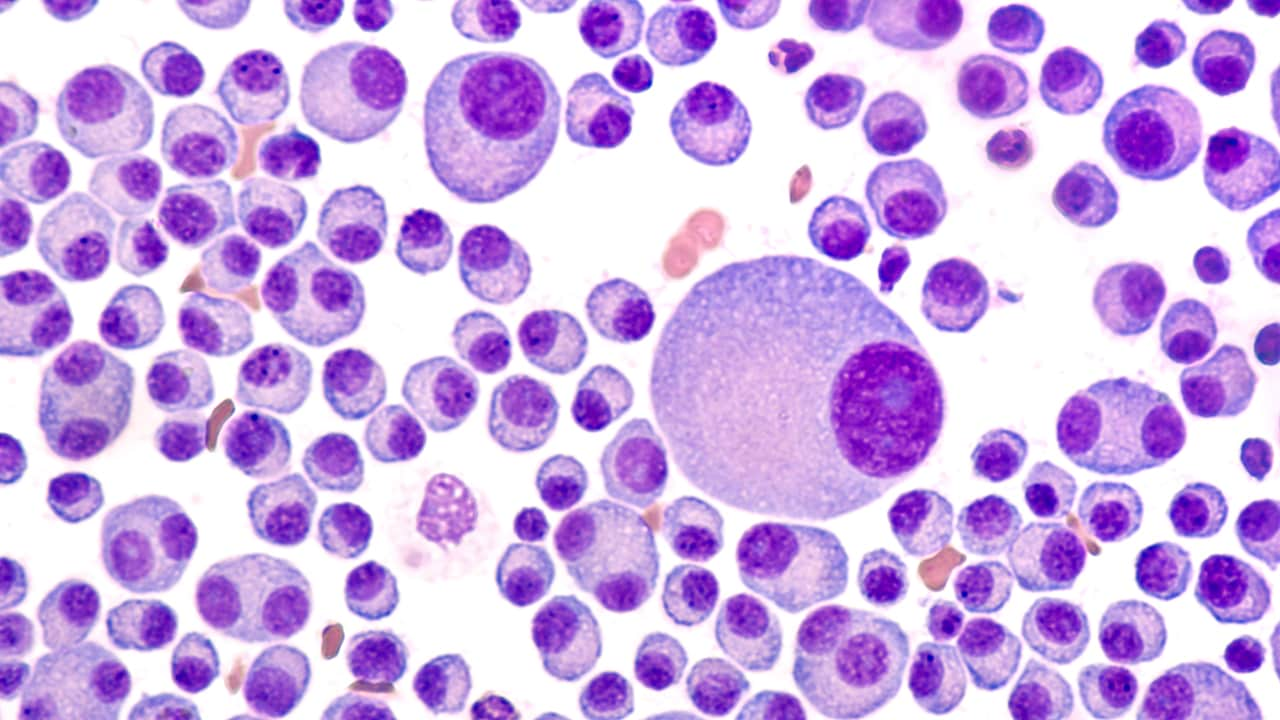June 20, 2012 (Amsterdam, the Netherlands) — With carfilzomib, an investigational proteasome inhibitor for use in multiple myeloma, in combination with lenalidomide (Revlimid) plus dexamethasone, 61% of patients achieved a stringent complete response (CR) after 8 cycles, researchers reported here at the 17th Congress of the European Hematology Association.
Data on carfilzomib have already been filed for approval, and will be discussed this week at a meeting of the US Food and Drug Administration (FDA) Oncologic Drugs Advisory Committee.
Cecilie Blimark, MD, a consultant hematologist from Sahlgrenska University Hospital in Gothenburg, Sweden, who was not involved with the study, said that the data presented show that carfilzomib achieved an unprecedented CR rate. "They're impressive, if of course you believe a good CR rate translates into long progression-free survival. With older drugs...the delivered dose was too low to see a response, and this has an impact on efficacy," she told Medscape Medical News.
"With carfilzomib, previous studies have shown how good it is. I am very impressed by the response rates in the stringency arm. I think carfilzomib stands a good chance of obtaining FDA approval," Dr. Blimark said.
Carfilzomib in Combination
The data were presented in a poster by Dominik Dytfeld, MD, from the Karol Marcinkowski University of Medical Sciences, Poznań, Poland, in collaboration with Andrzej Jakubowiak, MD, from the University of Michigan in Ann Arbor.
"Carfilzomib...has a lot of advantages over similar agents currently available on the market," Dr. Dytfeld told Medscape Medical News.
He explained that carfilzomib is very well tolerated and that "we do not see neuropathy, which is an issue in patients receiving bortezomib [the current standard of care]. This fact allows us to prolong treatment and consequently improve response rates," explained Dr. Dytfeld.
In the first-line setting, this 3-drug combination "allowed us to achieve nearly 100% partial response [98%]," he said. Only 1 of 53 patients did not respond, he added.
In the 36 of 53 patients who received 8 cycles of treatment with the 3-drug regimen, 78% acheived at least near CR and 61% acheived stringent CR. "There's also a high rate of very good partial response, so more than 80% of patients experienced over 90% disease reduction," Dr. Dytfeld reported.
In a previous phase 1/2 study of patients with newly diagnosed multiple myeloma, presented in 2011 at the American Society of Hematology annual meeting (abstract 631), the 3-drug combination showed high activity and good tolerability. Because carfilzomib was well tolerated and response rates were good (rapid 68% reduction of disease after 1 cycle), a maximum planned dose of carfilzomib 36 mg/m² was chosen as the phase 2 study dose.
Study Details
All patients had multiple myeloma and were eligible for first-line treatment. Patients were excluded if their creatinine clearance was below 50 mL/minute or their serum creatinine was above 2 g/dL. Median age was 59 years, and 33% had unfavorable cytogenetics (mainly del[13] or hypodiploidy).
Thirty-six patients received the 3-drug combination as follows: for cycles 1 to 8, carfilzomib 36 mg/m² was given on days 1 to 2, 8 to 9, and 15 to 16; lenalidamide 25 mg was given on days 1 to 21; and dexamethasone 40 mg weekly was given for cycles 1 to 4 and dexamethasone 20 mg was given for cycles 5 to 8. Maintenance treatment for cycles 9 to 24 consisted of carfilzomib on days 1 to 2 and 15 to 16 only, plus all 3 drugs at the last best-tolerated doses. For cycles 25 onward, lenalidomide was given at the best-tolerated dose.
Stringent CR Improves With Number of Cycles
With a median number of 12 treatment cycles, 62% of patients achieved near CR and 42% achieved stringent CR. As the number of treatment cycles increased, the rate of stringent CR improved. After the completion of 4 cycles, 67% of patients achieved near CR and 45% achieved stringent CR. Of the 36 patients who completed 8 cycles and continued with maintenance therapy, 72% achieved near CR and 61% achieved stringent CR.
Furthermore, the responses were durable; estimated progression-free survival was 97% at 1 year and 92% at 2 years. All patients who achieved stringent CR maintained their response for a median of 9 months.
"The best response rate was extremely high, with 98% of patients responding, 81% achieving at least very good partial response, 62% achieving near CR, and 42% achieving stringent CR," Dr. Dytfeld reported.
The reserachers checked for plasma cells using immune phenotyping in patients achieving stringent CR and found 97% negativity. "This means that disease reduction is really very high," he said.
"After 4 cycles, patients who achieved at least a partial response and were eligible for bone marrow transplantation were mobilized; stem cells were collected and transplantation carried out if the patient and physician chose to do so. The majority continued treatment on the combination," said Dr. Dytfeld.
The most common toxic effects (all grades) were lymphopenia (30%), leukopenia (26%), and fatigue (25%). Peripheral neuropathy was infrequent (11%) and mild to moderate in severity (grades 1/2).
Significant Advance?
Asked why he considers carfilzomib to be a significant advance over drugs currently in use, Dr. Dytfeld explained that "with bortezomib, you have to stop treatment because of toxic side effects. Here, this is not the case; carfilzomib is well tolerated."
"We await approval for the refractory setting.... The next step is to conduct a randomized controlled trial in the first-line setting," concluded Dr. Dytfeld.
The study was sponsored by Onyx Pharmaceuticals. Dr. Dytfeld and Dr. Blimark have disclosed no relevant financial relationships.
17th Congress of the European Hematology Association (EHA): Abstract 1767 and poster 0284. Presented June 16, 2012.
Medscape Medical News © 2012 WebMD, LLC
Send comments and news tips to news@medscape.net.
Cite this: Carfilzomib Combo Achieves High Response in Multiple Myeloma - Medscape - Jun 20, 2012.









Comments